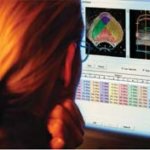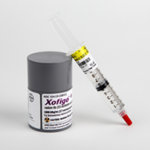With the right care, prostate cancer is a highly-curable disease. Dr. Arun Puranik and the IGRT oncology team have been successfully treating prostate cancer patients with leading-edge radiation therapies and techniques since 1985.
Effective Therapies
 Prostate cancer is the uncontrolled growth of abnormal cells in the prostate gland that can ultimately spread to nearby tissues or organs as well as other parts of the body. IGRT specializes in two forms of radiation therapy treatments that are proven to be very effective in eliminating prostate cancer: Brachytherapy and External Beam Radiation Therapy.
Prostate cancer is the uncontrolled growth of abnormal cells in the prostate gland that can ultimately spread to nearby tissues or organs as well as other parts of the body. IGRT specializes in two forms of radiation therapy treatments that are proven to be very effective in eliminating prostate cancer: Brachytherapy and External Beam Radiation Therapy.
Brachytherapy
 Brachytherapy is a form of internal radiation treatment in which small radiation sources about the size of a grain of rice, commonly called seeds, are permanently implanted into the prostate. Brachytherapy utilizes ultrasound imaging to view and guide needles as they accurately place the seeds directly into the prostate.
Brachytherapy is a form of internal radiation treatment in which small radiation sources about the size of a grain of rice, commonly called seeds, are permanently implanted into the prostate. Brachytherapy utilizes ultrasound imaging to view and guide needles as they accurately place the seeds directly into the prostate.
Implantation of the radioactive sources is a minimally invasive procedure, which can be performed in an outpatient setting (does not require a hospital stay). It generally takes about one hour to perform. Either Iodine (I-125) or Palladium (Pd-103) radioactive sources are inserted through the perineum (the area between the scrotum and the anus) into the prostate gland. Dr. Puranik will determine which isotope is most appropriate for your specific condition and, working with your urologist, will implant the radiation sources for maximum benefit to effectively treat the cancer.
External Beam Radiation Therapy
 During external beam radiation therapy, a beam of radiation is directed through the skin to a tumor and the immediate surrounding area in order to destroy the main tumor and any nearby cancer cells. To minimize side effects, the treatments are typically given every day for a number of weeks.
During external beam radiation therapy, a beam of radiation is directed through the skin to a tumor and the immediate surrounding area in order to destroy the main tumor and any nearby cancer cells. To minimize side effects, the treatments are typically given every day for a number of weeks.
The radiation beam comes from a machine located outside of your body that does not touch your skin or the tumor. Receiving external beam radiation is similar to having an X-ray taken. It is a painless, bloodless procedure. Using sophisticated treatment planning software, your radiation oncology treatment team plans the size and shape of the beam, as well as how it is directed at your body, to effectively treat your tumor while sparing the normal tissue surrounding the cancer cells.
Three Methods to Provide External Beam Therapy
Image Guided Radiation Therapy (IGRT)
Normal structures and tumors can move between treatments due to differences in organ filling or movements while breathing. IGRT is radiation therapy guided by imaging equipment such as CT, ultrasound or stereoscopic X-rays that are taken in the treatment room just before the radiation is delivered. All patients first undergo a CT scan as part of the planning process. The digital information from the CT scan is then transmitted to the treatment console to allow the therapists to compare the earlier image with the images taken just prior to treatment. This allows for better targeting of the cancer while avoiding nearby healthy tissue. In some cases, a tiny piece of material called a fiducial marker may be implanted near or in the tumor to help localize the tumor during IGRT.
Intensity Modulated Radiation Therapy (IMRT)
Intensity modulated radiation therapy (IMRT) is a specialized form of 3D-CRT that allows radiation to be more exactly shaped to fit your tumor. With IMRT, the radiation beam can be broken up into many “beamlets,” and the intensity of each beamlet can be adjusted individually. Using IMRT, it may be possible to further limit the exact amount of radiation that is received by normal tissues that are near the tumor. In some situations, this may also allow a higher dose of radiation to be delivered to the tumor, increasing the chance of a cure.
Three-Dimensional Conformal Radiation Therapy (3D-CRT)
Tumors usually have an irregular shape. Three-dimensional conformal radiation therapy (3D-CRT) uses sophisticated computers and computed axial tomography scans (CT or CAT scans) and/or magnetic resonance imaging scans (MR or MRI scans) to create detailed, three-dimensional representations of the tumor and surrounding organs. Dr. Puranik can then shape the radiation beams exactly to the size and shape of your tumor. The tools used to shape the radiation beams are multi-leaf collimators or blocks. Because the radiation beams are very precisely directed, nearby normal tissue receives less radiation exposure.
Dr. Puranik and the IGRT team will work with you and your doctor to determine what type of therapy options will work best for you and design a treatment strategy to deliver the best, most effective results.
Xofigo® Injection for Castration Resistant Prostate Cancer
 If prostate cancer has spread to your bones, you should ask Image Guided Radiation Therapy about Xofigo®.
If prostate cancer has spread to your bones, you should ask Image Guided Radiation Therapy about Xofigo®.
Xofigo® is used to treat prostate cancer that is resistant to other medical and surgical treatments that lower testosterone. The medical term for this condition is castration-resistant prostate cancer (CRPC). Xofigo® can be used to treat castration-resistant prostate cancer to help slow the spread of your cancer.
Links & Helpful Information
Zero – The Project to End Prostate Cancer
www.zerocancer.org
Prostate Cancer Foundation
www.prostatecancerfoundation.org
Us Too! International Prostate cancer Education and Support Network
www.ustoo.org

